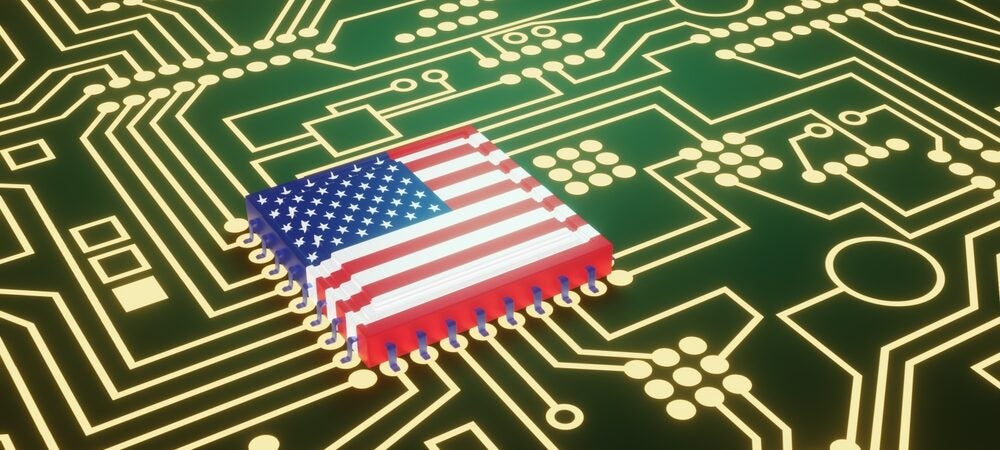With the recent enactment of the CHIPS and Science Act, longtime advocates of industrial policy are feeling a sense of triumph, and proclaiming that U.S. economic policy has entered a new era. The old “laissez-faire” approach is dead, they say, and state-directed economic policies are back in favor. While this new legislation is clearly significant, portraying it as transformational may be overstating its impact, and big questions remain: How much has actually changed in U.S. economic policy? And will the new initiatives work?
Let’s start with whether there really is a big shift in policy here. It is fair to say that “industrial policy” has long been looked down upon by many leading economists. Nonetheless, a wide range of actual U.S. economic policy falls squarely within it: ethanol subsidies, high tariffs on steel and aluminum imports, very long copyright terms, and price supports for sugar are just a few examples of how the U.S. government has tried to support specific U.S. industries. Whether or not people referred to this as “industrial policy,” that’s what it is. Thus, regardless of what leading policy thinkers had to say about industrial policy, policy makers have been very willing to adopt it (often at the behest of the corporations that benefited).
But now people are using the term “industrial policy” more, and expanding the scope of industries covered, with semiconductors the most prominent one. That is a shift, although not an unprecedented one. In the beginning of Bill Clinton’s first term, industrial policy was also a hot topic. And in the 1980s, the Reagan administration pushed its own version of support for the semiconductor industry.
Longtime advocates of industrial policy such as Dani Rodrik say the new CHIPS Act is significant “because it is a sign that we have moved well beyond market fundamentalism and because it shows there is now bipartisan support for industrial policies.” Of course, the idea that we were ever in a place of “market fundamentalism” is contradicted by the facts of actual U.S. economic policy, as noted above, which involved a wide range of economic interventions by the government. Industrial policy advocates are looking to spin these new developments in a triumphalist way, in an effort to demonstrate that their policies are in vogue. But the degree of change is less clear, and it will likely take a few years to gather enough evidence on past and current U.S. government economic interventions to do a proper comparison and make an assessment of how big a shift we are seeing.
The second question is whether new initiatives such as the CHIPS Act will be successful. This law offers more than $50 billion in subsidies to semiconductor companies to build new production facilities in the United States. Will this work? This depends in part on how we define “work.”
One problem is that these companies might just be trying to extract government money for projects they would undertake anyway. Such efforts are fairly common, as companies play governments off one another to extract financial concessions for already planned investments. (This is why Bernie Sanders and others worry that these subsidies are just “corporate welfare.”) So we might see new semiconductor investment in the United States in the coming years, but it will be hard to determine whether it is more than what would have happened without the subsidies.
Assuming that these subsidies do increase investment beyond what we would have seen otherwise, we then run the risk that the industry has been distorted in ways that are unsustainable in the market in the long run. If we incentivize companies so much that they over-produce, it could lead to some companies becoming unprofitable, and then demanding a new round of subsidies to keep then afloat. Once companies become dependent on government support, it is hard to wean them off it.
Underlying all of this is a fundamental question: Is there a problem with U.S. semiconductor production being too low right now? Surely there are some sectors (e.g., military aircraft) where we would not want to be too dependent on other countries. But is semiconductors in that situation at the moment? It can be hard to answer this, because some of the data being used as a justification for the subsidies is misleading. For example, a Washington Post article titled “A new era of industrial policy kicks off with signing of the Chips Act” noted that: “About 37 percent of the world’s semiconductors were manufactured in the United States in 1990 versus about 12 percent in 2020.” But in 1990, China was not an economic powerhouse, and as its consumption of semiconductors in domestic manufacturing sectors grew, it was sure to increase its share of global semiconductor production. It may be that the U.S. industry is performing badly, but commonly cited figures such as these are not convincing evidence of that. The public debate needs an objective assessment of just how many semiconductors the United States needs to produce domestically or buy from friendly countries in order to be secure.
There are many questions about the future of U.S. industrial policy, and it could take years to answer them. Will the CHIPS Act’s semiconductor subsidies have their intended effect? Will these types of economic interventions be extended to other industries? Will the current enthusiasm for industrial policy fade away as it did after an early burst in the Clinton years? And could the sudden prominence of the issue lead to a rethink of any of the long-standing industrial policies in sectors that are much less strategically important? The conversation over industrial policy has started up again, but it remains to be seen where we end up.
By Simon Lester, J.D., Nonresident Fellow, International Economics, Rice University’s Baker Institute For Public Policy
To read the full commentary by Simon Lester, J.D. please click here

